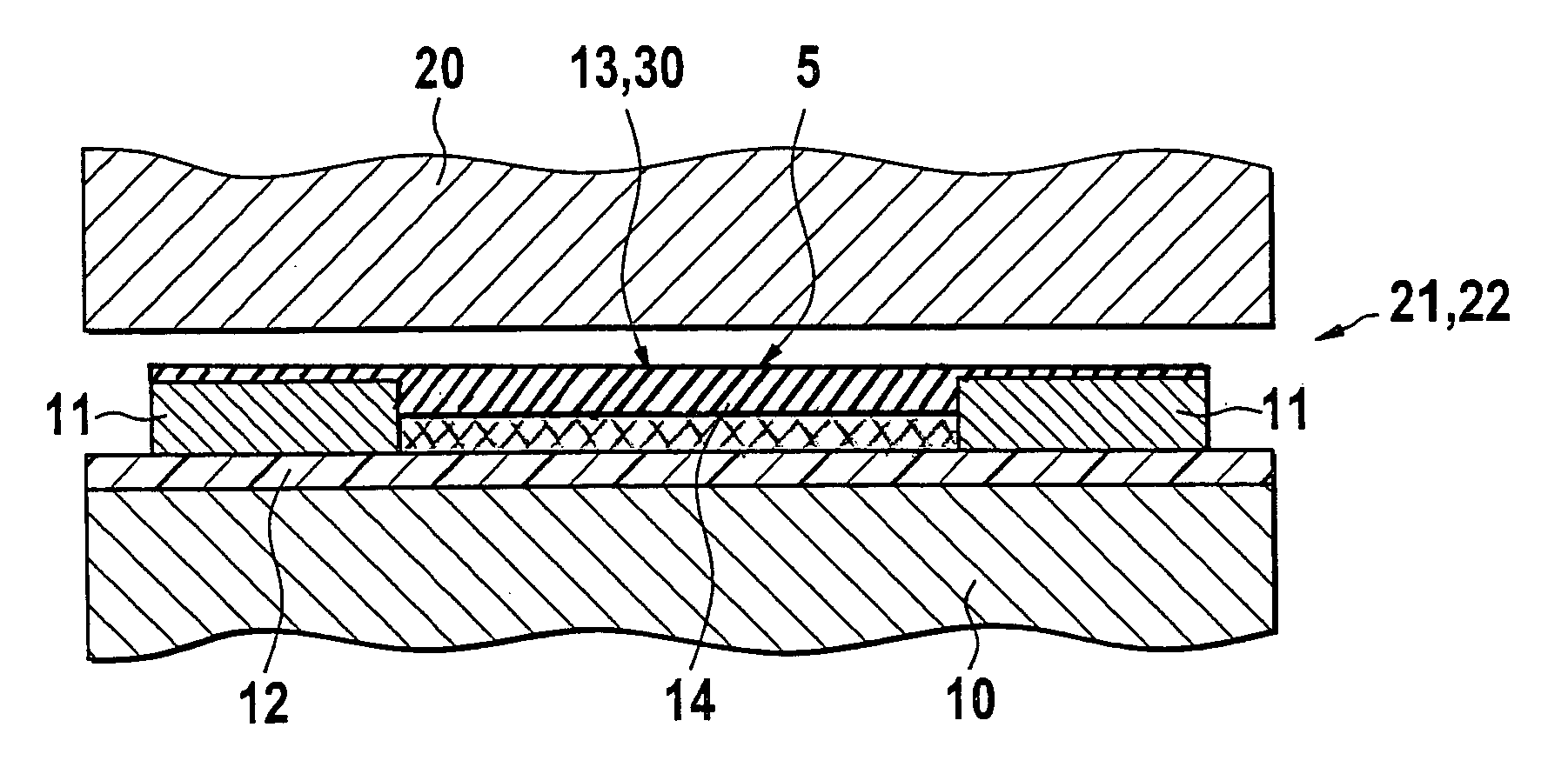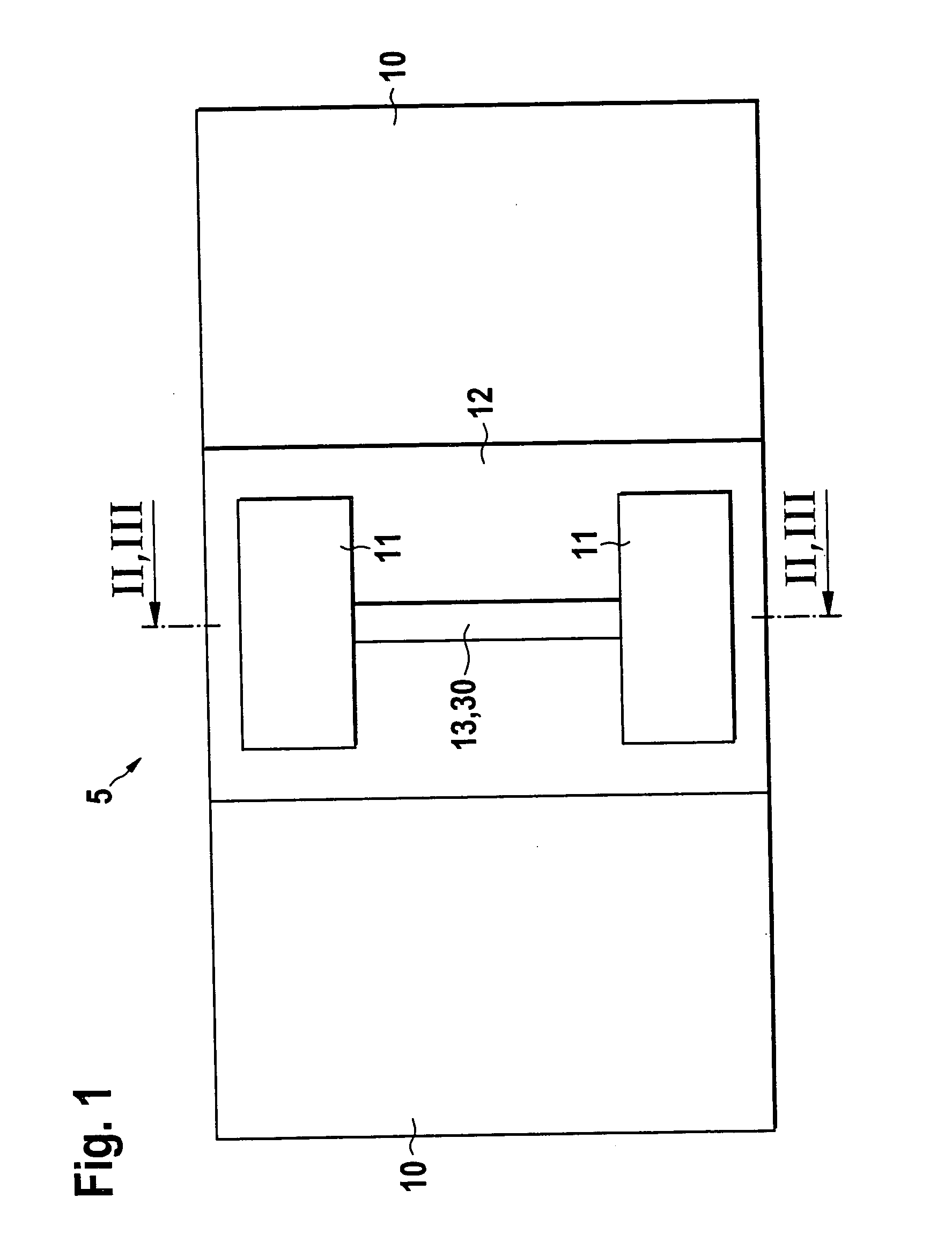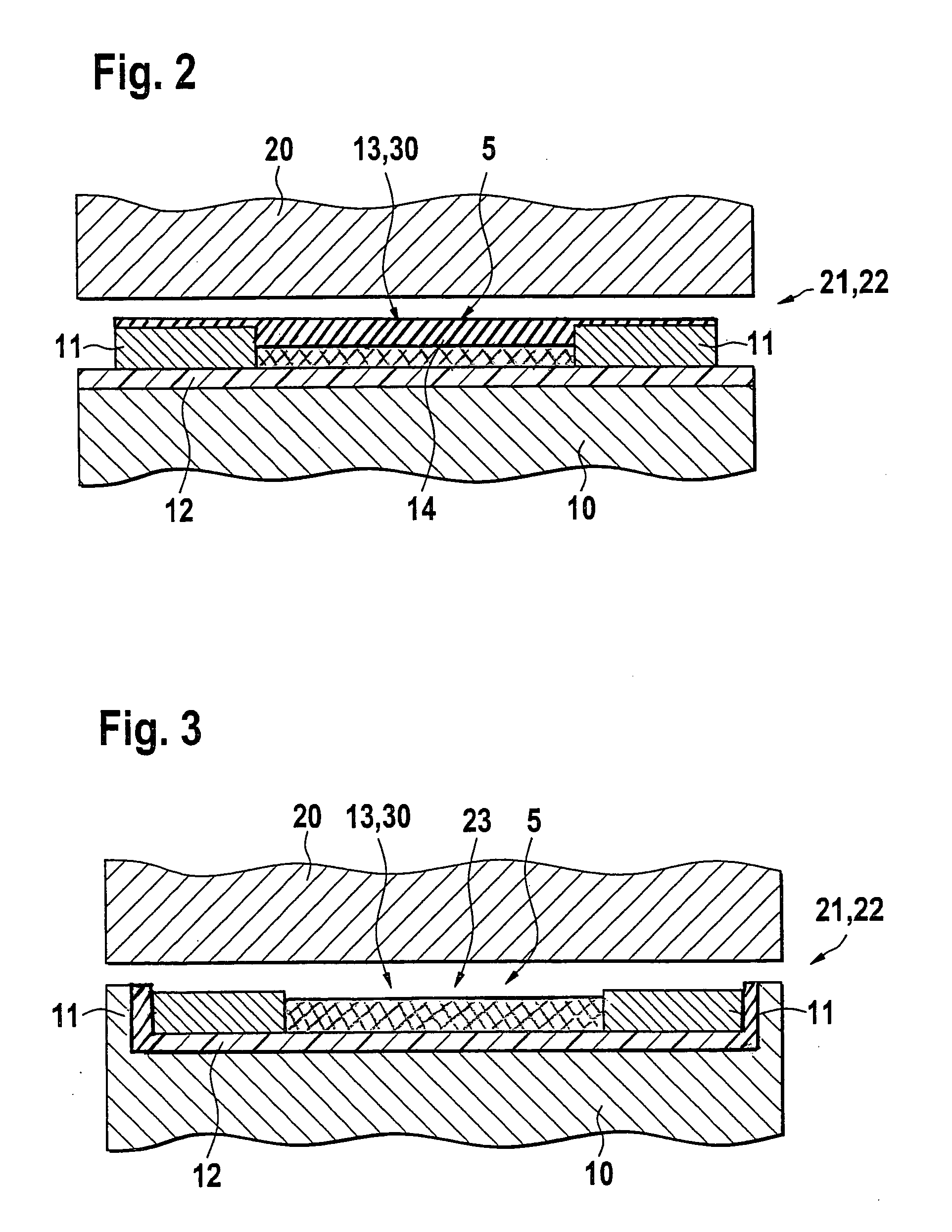Sensor element for detecting a physical measuring variable between bodies exposed to high tribological strain
a technology of detecting elements and physical measuring variables, applied in the direction of instruments, force/torque/work measurement, instruments, etc., can solve the problems of lubricating film between the bodies, damage to the corresponding components, and the load capacity limits of materials used to be very quickly reached or even exceeded
- Summary
- Abstract
- Description
- Claims
- Application Information
AI Technical Summary
Benefits of technology
Problems solved by technology
Method used
Image
Examples
Embodiment Construction
[0025] FIG. 1 shows a metallic substrate 10, for example a metallic ignition distributor shaft in a high-pressure injection system of a motor vehicle or another technical surface with a roughness that can be up to several .mu.m, certain areas of which have an insulation layer 12 deposited on them, with two contact surfaces 11, which are connected to each other by means of a sensitive layer 30 embodied as a sensor segment 13 so that the contact surfaces 11 and the sensor segment 13 form a double-T structure, which, along with strip conductors that are not shown, is connected as a sensor element 5 to external electronic components as part of an electronic measurement bridge. In addition, the influence of a physical measurement variable to be detected, in particular a changing pressure, a changing mechanical stress, or a changing temperature, causes the sensor segment 13 to change in at least one measurable physical property, in particular its electrical resistance. In addition, the se...
PUM
| Property | Measurement | Unit |
|---|---|---|
| thickness | aaaaa | aaaaa |
| thickness | aaaaa | aaaaa |
| thickness | aaaaa | aaaaa |
Abstract
Description
Claims
Application Information
 Login to View More
Login to View More - R&D
- Intellectual Property
- Life Sciences
- Materials
- Tech Scout
- Unparalleled Data Quality
- Higher Quality Content
- 60% Fewer Hallucinations
Browse by: Latest US Patents, China's latest patents, Technical Efficacy Thesaurus, Application Domain, Technology Topic, Popular Technical Reports.
© 2025 PatSnap. All rights reserved.Legal|Privacy policy|Modern Slavery Act Transparency Statement|Sitemap|About US| Contact US: help@patsnap.com



